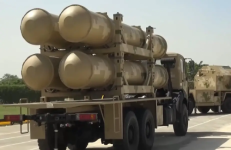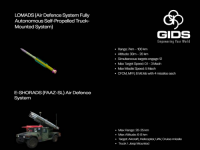- Jan 25, 2024
- 111,083
- 353
THE PAKISTAN ARMY'S AIR DEFENCE SYSTEMS

In January, the Pakistan Army (PA) conducted an exercise to test its various air defence systems. Based on the details released by Inter-Services Public Relations (ISPR), the media branch of Pakistan's military, the Army test-fired the gamut of its surface-to-air missile (SAM) systems, namely: "HIMADS," "LOMADS," "E-SHORAD," and "SHORAD."
Together, these SAMs form the Army's "Comprehensive Layered Integrated Air Defence" (CLIAD) system. CLIAD is the outcome of a decade-long initiative by the Army to build its own multi-layered ground-based air defence system (GBADS). CLIADS enables the Army to efficiently distribute its SAM deployment and management across its hierarchy, from Corps level to Brigade level. This was a significant step for the Army as it operated mostly man-portable air defence systems (MANPADS), such as the ANZA-series, until the 2010s.
This step was driven to address growing enemy close air support (CAS) and anti-armour/infantry/artillery air threats as well as the need to acquire more flexibility in land forces maneuvers without entirely relying on the Pakistan Air Force (PAF) to intercept enemy aircraft and undertake long-range strikes. In terms of the latter, the Army is building its own stand-off range weapon (SOW) capability through artillery.
This analysis aims to unpack the SAM systems under CLIAD and how the Army will leverage it in the long-term for supporting its maneuvers and protecting its assets/facilities.
Pakistan Army's SAM Systems
HIMADS
The High-to-Medium Air Defence System (HIMADS) is the HQ-9/P long-range SAM. Inducted in 2021, the HQ-9/P has a range of 125 km and, according to the Army, can intercept aircraft and cruise missiles. The HQ-9/P's capacity to intercept cruise missiles is likely limited to a shorter range, possibly under 25 km.
The HQ-9/P's guidance suite likely leverages an inertial navigation system (INS) aided by a targeting radar via datalink and a terminal-stage active radar-homing (ARH) seeker. The system uses the HT-233 phased-array fire control radar.
LOMADS
The Low-to-Medium Air Defence System (LOMAD) seems to consist of two SAM systems – the LY-80 and the LY-80EV. The Army inducted the LY-80 in 2017 and it provides a stated range of 40 km. The LY-80EV is less clear; however, it may be the improved 70 km range variant of the HQ-16 revealed in 2016.
The LY-80 uses a semi-active radar-homing (SARH) guidance system where it depends on an illumination radar to maintain a lock on the target as the missile reaches it. It is unclear if the LY-80EV uses a different guidance configuration (e.g., ARH like the HQ-9/P), though it is possible.
The LY-80/EV leverages the IBIS-150, an S-band passive electronically-scanned array (PESA) surveillance radar with a range of 150 km and multiple L-band fire control radars with ranges of 85 km each.
ESHORAD
The Extended Short-Range Air Defence System (ESHORAD) may be the FM-90 system, which offers a range of 15 km. The FM-90 uses a command guidance system and is primarily designed to intercept low-flying aircraft, drones, and, potentially, missiles/munitions.

SHORAD
The Short-Range Air Defence System (SHORAD) is likely the ANZA-Mk2. Using infrared (IR) homing for guidance, the MANPADS offers a range of up to 5,000 m. The Army may also be using the Saab RBS-70 NG as a SHORAD system. This is a laser-guided SAM with a maximum range of 9,000 m.
The Army also uses the older RBS-70 (range: 9,000 m), FN-6 (range: 6,000 m), FN-16 (range: 6,000 m), Anza-3 (range: 5,000 m), and Anza-2 (range: 5,000 m) for its SHORAD needs.
Potential Deployment and Utilization
To what extent the Army's CLIAD integrates with the PAF's GBADS is unclear. However, there appears to be a level of demarcation between the ranges covered by the Army and the PAF. For example, the PAF's new SAM systems – i.e., the HQ-9BE and HQ-16FE – cover 260 km and 160 km, respectively. This is longer than the reach of the Army's SAMs. Thus, it is possible coverages beyond a certain range and altitude are the responsibility of the PAF, freeing the Army and Navy to build their own capabilities under a threshold…


